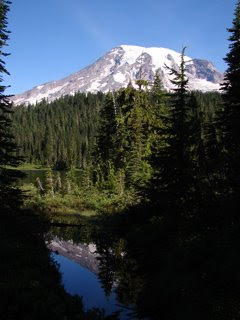Advent tends to be a season of subtraction, or at least that is the theme of the lessons. Two Sundays ago we heard John the Baptist quoting Isaiah to the Levites: “Make straight the way of the Lord,” the subtext being clear out the clutter, remove all impediments to God’s action in the world. And what action it will be: delivery of the Word incarnate.
In southern Wisconsin our household has been removing impediments, namely snow, lots of snow, in making our driveway straight for the important but more prosaic deliveries from USPS and UPS. And that has meant a lot of subtraction through heavy lifting.
But Advent for us has been more about addition than subtraction. Meet Milo, a two year and three month American Eskimo with some possible Samoyed genes, who was raised in an Amish puppy mill (yes, we also had a double take).
 He spent his first year there and was on the kill list when Joyful Rescues out of Cuba, New York picked him up and nurtured him, until we arrived December 12. A harrowing 600 miles later through lake-effect snow most of the way we were back in southern Wisconsin with our new addition.
He spent his first year there and was on the kill list when Joyful Rescues out of Cuba, New York picked him up and nurtured him, until we arrived December 12. A harrowing 600 miles later through lake-effect snow most of the way we were back in southern Wisconsin with our new addition.Like Suki (who passed away November 21) we met Milo on the internet, and lost our hearts to him. Their resemblance is so close it almost is as if Suki is looking at us through Milo’s eyes. But Milo is a very different dog. For one thing, he is more fearful, a common trait among puppy mill dogs. And more anxious about change, which has landed him in the emergency animal hospital in Grayslake (where Suki was treated for lymphoma). Gastroenteritis, mouth ulcers, and a loss of appetite (presumably because it hurts to eat) has put him on IV fluids, and in the intensive care unit for three days. Today we bring him home, and hope and pray the drugs and our love will ease the pain and restore his appetite. Not just for food but for his new family.
The snow is now pouring out of the cloud cover, erasing yesterday’s efforts, and challenging us to locate the path that brought us home, let alone straightening it. It is Christmas eve, and some 2,000 years ago as the story goes, a family left the byways for a shelter, and delivered to us the sum of all our hopes. So let us praise addition.
























